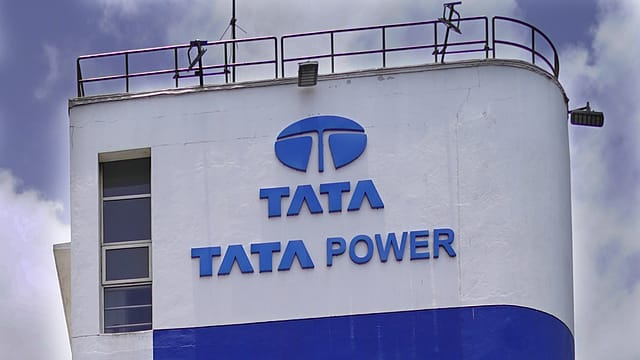India at the forefront of energy transition tech, Tata Power
ADVERTISEMENT

Apart from promoting large utility-scale renewable energy projects, India is at the forefront of extending the focus to innovative renewable energy programmes to leverage the changing technologies and meet the ambitious goal of 500 gigawatts (GW) of renewable power generation by 2030, says Praveer Sinha, MD & CEO, Tata Power Company (TPC).
"Many of the countries only talk about it (energy transition) but have not done any concrete steps, whereas the Indian Government took the policy initiatives and supported us in this ongoing transition," he said in an exclusive interaction with Fortune India.
New initiatives like the KUSUM program to solarise agriculture pump sets, the PM Surya Ghar program to solarise one crore households in the first phase, focus on solar-wind hybrid, floating solar, Fixed Duration Renewable Projects (FDRE), utility-scale Battery Energy Storage Systems (BESS) and Pumped Hydro Storage projects are examples of this transition happening in the country.
The technologies used in this energy transition are cost-competitive. Since raw materials like wind and solar are used for generating power, prices will not increase for the next 20-25 years, unlike in the case of fossil fuels like coal or gas. At the same time, at least half a dozen new battery technologies are coming up other than the current lithium-ion batteries. These are multiple technologies like sodium batteries, manganese batteries, flow batteries, zinc batteries and the like. In the world of nuclear energy, at some stage, small modular reactors will emerge instead of setting up huge reactor plants. "We live in a world where energy transition and climate change are a reality and have to move in that direction with focus and without knee-jerk reactions to reach goals," says Praveer Sinha.
December 2025
The annual Fortune 500 India list, the definitive compendium of corporate performance, is out. This year, the cumulative revenue of the Fortune 500 India companies has breached $2 trillion for the first time. Plus, find out which are the Best B-schools in India.
Praveer Sinha says India's renewable energy capacity addition plans are going in the right direction. The country already generates 15-16% of energy needs from renewable sources from virtually nil capacity 15 years ago. This is likely to become 45-50% by 2030. "In 2023, India added 18 gigawatts (GW) of renewables and in 2022, we added 13 GW. From 2025-2026 onwards, we will be adding about 30-35 GW a year and this addition will not only take care of the future demand increase but also will replace many of our existing brown coal-based projects with clean power," says Praveer Sinha.
He says Tata Power stands at the forefront of India's energy transition. In PM's KUSUM program, Tata Power has put more than one lakh pump sets with nearly 30% market share. The company has crossed 2 GWs with over 20% market share in rooftop solar installations. Under PM Surya Ghar's program, Tata Power maintain another 20% market share. The aim is to have around 70% of capacity from non-fossil-based fuels by 2030 from the current 40%. As of 31st March 2024, Tata Power has 4.5 GW of renewable capacity operational and another 5.5 GW of projects under implementation, taking the total green energy portfolio to over 10 GW. He elaborated that its clean energy portfolio will touch 15 GW by FY27, supplying round-the-clock renewable energy with a mix of solar, wind, hydro, hybrid, rooftop solar and Pumped Hydro Storage Projects (PSHP).
Its 4.3GW Cell & Module manufacturing facility in Tirunelveli - set up within a year - has commenced production and commercially produced around 130MW of modules in Q4FY24. Tata Power Renewable Energy’s (TPREL) utility-scale EPC order book now stands at 2.6 GW worth ₹13,400 crore, and rooftop solar and group captive EPC order book stands at ₹2,900 crore. Tata Power Solar Systems (TPSSL) commissioned India’s largest solar and battery energy storage project in Chhattisgarh, comprising 100 MW solar and 120 MWh utility scale Battery Energy Storage System (BESS). TPREL commissioned a pioneering 1040 kW Bifacial Solar System project at Chengmari Tea Estate in Eastern India and has bagged a 1.3 GW Firm and Dispatchable Renewable Energy (FDRE) project from SJVN Limited, says Sinha.
Tata Power reported its highest-ever revenue and EBITDA at ₹61,542 crore and ₹12,701 crore respectively in FY24. Reported PAT was also higher by 12%, from ₹3,810 crore in FY23 to ₹4,280 crore in FY24.
